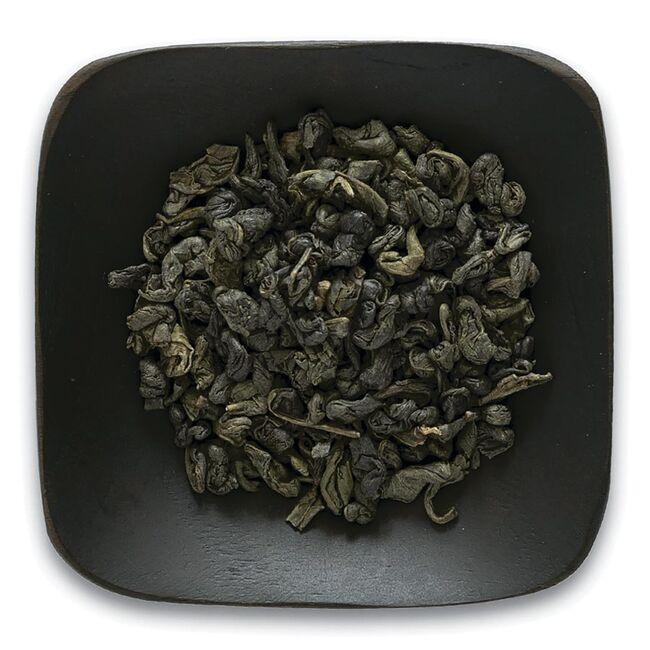
This was pretty inexpensive when I bought it – around $10 – and it had good reviews. I think I got it on Swanson Vitamins, but I think it’s also on Amazon.
Overall, not a great tea, but about as good as Chinese supermarket bag tea, and roughly “Lipton” level US supermarket tea. Better than most teabag green teas I’ve had — but those tend to be light flavored, probably for marketing reasons. This is more bitter, earthy and woody and less fragrant than most teabag Chinese green teas I’ve had.
It’s pretty high in tannins, and they come out even during the first and second steep. The flavor is bitter and tannic. Later steeps are less tannic, and more mineral and fragrant. (Tannins taste bitter and “dry” in the mouth, and have a slightly mineral aftertaste.)
(My more frequent tea is a midrange Japanese green tea. I’d say Frontier Co-Op is not as good – but for the price, is a better deal. This is definitely a daily drinker.)
I don’t drink tea with milk or sugar, unless it’s bagged spiced “chai”, so I don’t know how it interacts with both of these. It probably stands up to these additives. (Milk and sugar are usually added to reduce astringency, smooth out the flavors, and regulate bitterness.)
I tried spicing it with a drop of orange extract and a bit of cinnamon. It worked out okay – none of the flavors was blasting out to the front, and it still tasted like tea.
If you want to get more brews from this tea, use more tea, and steep for shorter periods, or use warm water and do a “cold brew” after the hot brews. You’ll taste more variation between the steeps.
I liked this tea better over ice, than hot. The water diluted it, and you could taste that it has some robust body to it. The aftertaste was nice and sweet mineral, and complimented the flavor of tap water. I suspect it would be good with mineralized bottled water, or water with added minerals via a tap-filter.
What Does Pinhead Gunpowder Mean?
“Gunpowder” refers to the appearance of the tea, which looks like rolled grains of gunpowder, but larger. Rolled tea is use to make oolong cha, so if you are familiar with loose leaf oolong, this is the same stuff, but green.
The leaves are rolled during processing, and comprise the smaller leaves of the plant. Rolling leaves help to prevent breakage during storage and transport.
“Pin head” is a mistranslation of the pingshui, which means “temple of heaven”. It’s produced in China.
Brewing
To brew this tea, I don’t follow the regular instructions.
Instead, I put the tea into a glass measuring cup with a handle, and add a little very hot (below boiling temp) water. Swirl it around for around 10 seconds. Then strain out the water and dispose of it. This helps to “clean” the off flavors from the leaves, and opens up the leaves. (This is part of Chinese tea technique, or gong fu cha. You have to wash it. The first steep doesn’t taste good.)
Then, I refill the cup with very hot water, and let it steep a minute or two, depending on how strong I want it. Then, strain it into a cup.
I use a little top-of-the-cup strainer rather than a pot.
If I’m making iced tea in a pitcher, I just heat 2-3 cups of very hot water, and add the washed tea leaves, and let it sit until it’s done. Then strain it into a pitcher of ice.
